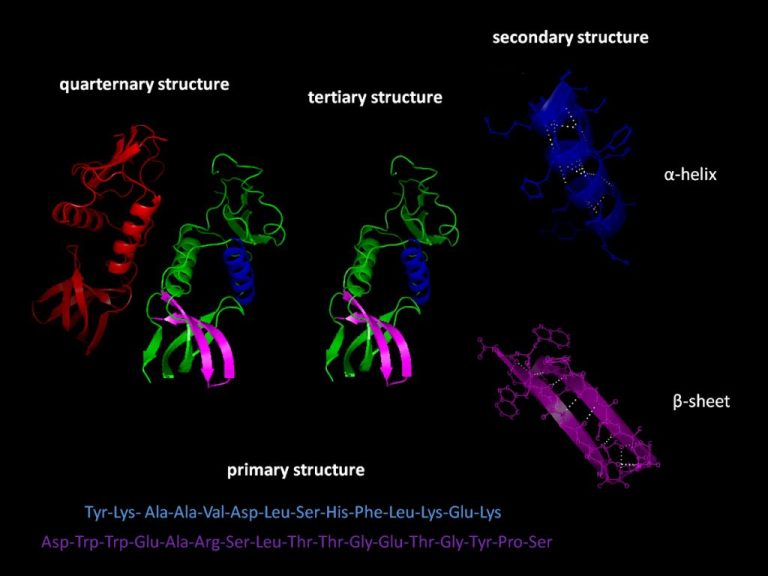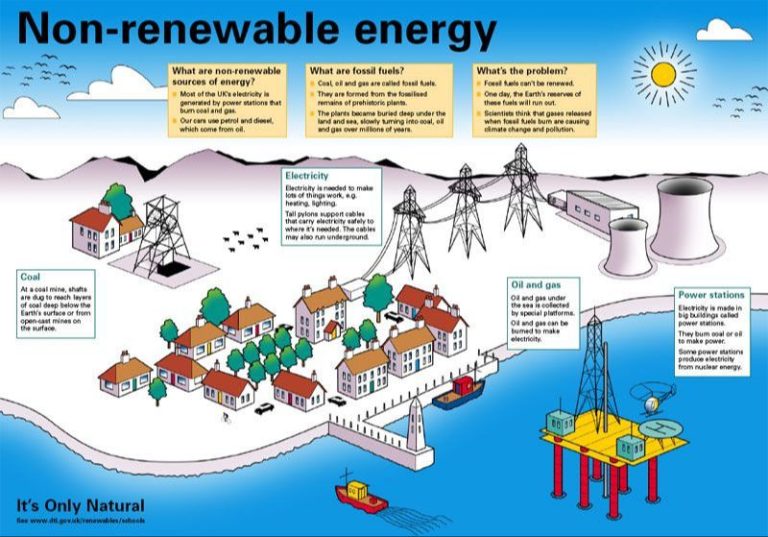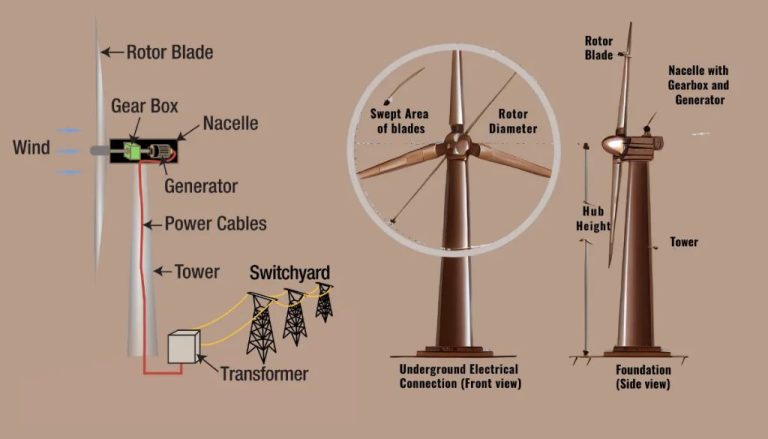What Are The Advantages And Disadvantages Of Conventional & Non Conventional Energy Sources?
Conventional energy sources refer to traditional sources of energy that have been used for decades or centuries, such as fossil fuels like coal, oil and natural gas, as well as nuclear and large hydroelectric power. These energy sources are considered conventional because of their widespread adoption and large-scale infrastructure. Non-conventional energy sources refer to renewable or alternative energy sources that have more recently become viable options for power generation. These include solar, wind, geothermal, biomass and other emerging technologies. In this article, we will provide an overview of both conventional and non-conventional energy sources, outlining the unique advantages and disadvantages of each. We will examine fossil fuels, nuclear and hydropower as examples of conventional sources, and solar, wind, geothermal and biomass as examples of non-conventional renewable sources. Energy storage solutions will also be discussed as a critical enabling technology for renewable energy. The goal is to provide a balanced perspective on different energy options available today and discuss their relative benefits and drawbacks.
Fossil Fuels (conventional)
Fossil fuels like coal, oil and natural gas are conventional energy sources that have been used for a long time. They are considered conventional because of their widespread adoption and abundance. Fossil fuels have high energy density and have been the backbone of industrial economies for over a century.
The main fossil fuels are:
Coal – A combustible black or brownish-black sedimentary rock that forms from buried organic matter like decaying plant material. Coal is the largest source of electricity worldwide.
Oil – A thick flammable liquid mixture of hydrocarbons that is extracted from geological formations beneath the Earth’s surface. Oil is refined into various products like gasoline, diesel, jet fuel, heating oil.
Natural Gas – A hydrocarbon gas mixture composed primarily of methane, but also contains varying amounts of other higher alkanes. Natural gas is used to generate electricity, heat buildings, cook food etc.
While fossil fuels are currently abundant and cheap, they are finite resources that take millions of years to form naturally. The reserves are being depleted much faster than new ones are being created. There are also serious environmental concerns with the large scale extraction and use of fossil fuels.
Nuclear (conventional)
Nuclear energy comes from the splitting of uranium atoms which generates heat to produce steam and spin a turbine. Uranium has an extremely high energy density, meaning a small amount of fuel produces an enormous amount of energy. Nuclear power plants emit very low emissions and can reliably generate baseload power. However, they produce radioactive waste that must be carefully stored for thousands of years. There are risks of nuclear meltdowns and proliferation of nuclear materials into weapons. Overall, nuclear energy has advantages as a reliable and low carbon energy source, but also has unique disadvantages regarding radioactive waste disposal and safety concerns that must be addressed.
Hydropower (conventional)
Hydropower is a renewable energy source that relies on the natural water cycle. Hydropower plants capture the energy of flowing water to generate electricity. Hydropower is considered a renewable energy source because it uses the Earth’s water cycle to generate power. The water cycle is continuously replenished by the sun and by rainfall.
Hydropower is also a very flexible energy source. The flow of water can be adjusted through turbines to immediately meet shifts in electricity demand. Hydropower responds efficiently to sudden spikes or drops in power grid requirements.
Hydropower has very low emissions compared to fossil fuel sources. It produces electricity without carbon emissions from fossil fuels. Hydropower emits much lower greenhouse gases than natural gas or coal plants.
However, hydropower dams and infrastructure can impact local aquatic ecosystems. Dams obstruct the natural flow of rivers and can prevent fish migration. The artificial flooding of land to create reservoirs also disturbs natural habitats.
Solar (non-conventional)
Solar energy comes from capturing the sun’s rays and converting it into electricity or heat. As a renewable energy source, solar has many advantages:
- Renewable – Solar energy is abundant and inexhaustible. The amount of solar radiation that reaches Earth annually is more than 10,000 times the world’s total annual energy consumption.
- Clean – Solar PV and solar thermal systems produce electricity and heat with zero emissions, reducing greenhouse gases and air pollution.
- Versatile – Solar power can be implemented on small and large scales, from residential rooftops to large solar farms. Solar thermal systems can provide hot water and space heating in addition to electricity generation.
- Low maintenance – Solar panels and solar water heaters have very few moving parts, requiring little maintenance over their lifetime.
However, solar power also has some disadvantages:
- Intermittent – Solar only generates energy when the sun is shining. Energy storage or grid integration strategies are needed for 24/7 power.
- High upfront costs – While solar has low operating costs, the high initial investment required can deter adopters.
- Land use – Large solar farms require significant land area, which could otherwise be used for other purposes.
- Diffuse power – The sun’s energy is diluted due to its wide area of coverage. Large arrays are needed to collect substantial solar power.
Overall, solar power has enormous potential as an abundant, renewable, and emissions-free energy source. Ongoing innovations and cost declines are helping to mitigate solar’s disadvantages and make it more competitive and widespread.
Wind (non-conventional)
Wind energy is one of the most prominent renewable and clean energy sources. Wind turbines convert the kinetic energy of wind into mechanical power, which is then converted into electricity. Wind energy has several advantages:
Renewable: Wind is a renewable energy source that will never run out. Wind energy does not produce any emissions or carbon pollution, making it a sustainable long-term energy solution.
Low emissions: Unlike fossil fuels, wind energy does not emit greenhouse gases or other air pollutants. Generating electricity from wind has negligible emissions.
Intermittent supply: The availability of wind energy depends on wind patterns, which can be intermittent. Additional infrastructure like energy storage is needed to provide a consistent electricity supply.
Aesthetic and land use concerns: Some people find wind turbines visually unappealing or object to their sound. Wind farms also take up large areas of land.
Overall, wind power represents a clean, renewable energy source with minimal environmental impact. Despite intermittency and land use issues, wind energy will likely play a major role in the global transition to sustainable energy.
Geothermal (non-conventional)
Geothermal energy is considered a renewable and reliable energy source that takes advantage of the natural heat within the earth to generate electricity. It relies on tapping into pockets of hot water or steam found below the earth’s surface to spin turbines and generate power. While geothermal energy production emits little to no greenhouse gases, it does have some limitations:
– Suitable Locations: Geothermal energy can only be harnessed in areas with optimal underground temperatures and appropriate geological features, like tectonic plate boundaries or volcanic activity. This limits widespread adoption.
– High Upfront Costs: Drilling and installing geothermal power facilities requires significant upfront capital investment, which can deter adoption. Costs range from $2-4 million for a 1 MW plant.
However, once set up, geothermal plants provide consistent baseload power with capacity factors over 90% in some cases. The reliability of geothermal energy gives it an advantage over weather-dependent renewables like wind and solar. Overall, geothermal provides renewable, reliable energy but has geographical and cost limitations.
Biomass (non-conventional)
Biomass energy comes from plant and animal matter. Sources of biomass include food crops, grassy and woody plants, residues from agriculture or forestry, oil-rich algae, and organic components in municipal and industrial wastes. Unlike fossil fuels, biomass comes from recently living plants and animals.
As a renewable energy source, biomass can play a large role in reducing greenhouse gas emissions when it replaces fossil fuels. Biomass is organic material that comes from plants and animals, and it is a renewable source of energy. Biomass contains stored energy from the sun. Plants absorb the sun’s energy in a process called photosynthesis. When biomass is burned, the chemical energy in biomass is released as heat. Biomass can be burned directly or converted to liquid biofuels or biogas that can be burned as fuels. Examples of biomass and their uses for energy include:
- Wood and agricultural crops — burned to heat buildings, to produce process heat for industrial facilities, and to generate electricity
- Food scraps and animal manure — decomposed and converted into biogas or oils that can be burned for energy
- Forestry residues — chipped and burned to produce biofuels, generate electricity, and provide process heat
- Purpose-grown grass crops — harvested and burned for electricity generation
The main drawback of using biomass sources for energy is that burning biomass releases air pollutants, however careful equipment design and operation can minimize air emissions.
Energy Storage
One of the key challenges with renewable energy sources like solar and wind is that they are intermittent – they only generate power when the sun is shining or the wind is blowing. This is where energy storage becomes crucial. By storing the excess energy produced at times of peak generation, it can then be discharged when energy demand exceeds supply. Energy storage helps to smooth out the variability in renewable generation and ensures a consistent electricity supply.
There are several storage technologies that are being utilized or developed. Pumped hydro storage is the most prevalent, where excess electricity is used to pump water uphill into a reservoir. When energy is needed, the water is released back downhill to spin a turbine. Other options include batteries, compressed air storage, flywheels, and thermal storage. Battery storage in particular is becoming more cost-effective and widespread. Advancements in battery chemistry and manufacturing are enabling larger grid-scale battery installations. The growth of electric vehicles may also provide opportunities for vehicle-to-grid storage. Overall, advancements in energy storage are critical for increasing the utilization of renewable energy sources.
Conclusion
In summary, there are advantages and disadvantages to both conventional and non-conventional energy sources. Conventional sources like fossil fuels provide reliable, consistent power but contribute to climate change. Non-conventional renewables like solar and wind are cleaner but currently lack the capacity to meet all our energy needs.
Going forward, policymakers will need to balance priorities like affordability, energy security, and sustainability. Investing more in renewable infrastructure can help transition away from fossil fuels over the long-term. But in the meantime, a diverse energy mix is required. There are also opportunities around energy storage and smart grid technology to better incorporate intermittent sources like solar and wind.
Overall, evaluating each energy option based on its unique merits and drawbacks, without a one size fits all solution, can lead to an optimal path forward. Policy and technology improvements will both play crucial roles in building a robust, clean, and resilient energy system.






